Buffalo Savings / M&T Center - Table of Contents
Interior - North and East Wings
Buffalo Savings Bank / Goldome / M&T Center
545 Main Street, Buffalo, NY
On this page, below:
Interior paintings were not commissioned until 1925. The three artists were William C. Francis, a Buffalo artist, Eugene F. Savage and George Davidson. The paintings were to be completed in 18 months. Frances and Davidson painted the "Founding of Buffalo" mural.
North wing Arabesque: an ornament or style that employs flower, foliage, or fruit and sometimes animal and figural outlines in a fancifully combined pattern. Some Western arabesques derive from Islamic art, but others are closely based on Ancient Roman decorations, e.g., in Pompeii. 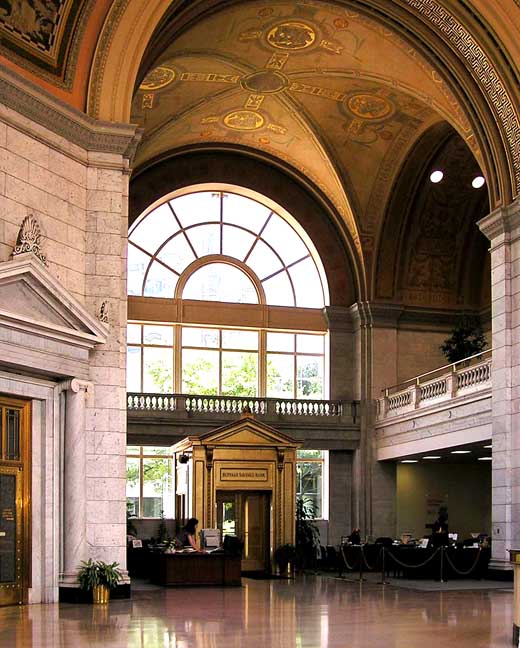 Looking north: View facing the outdoor terrace and 1983 addition ... Distinctive fanlight ... Note ceiling medallion murals and arabesques, which are detailed below: 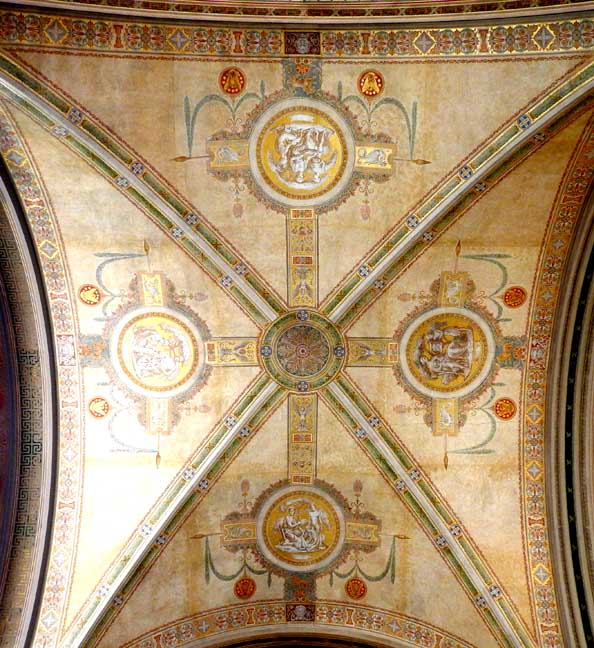 Different lighting and angle below: 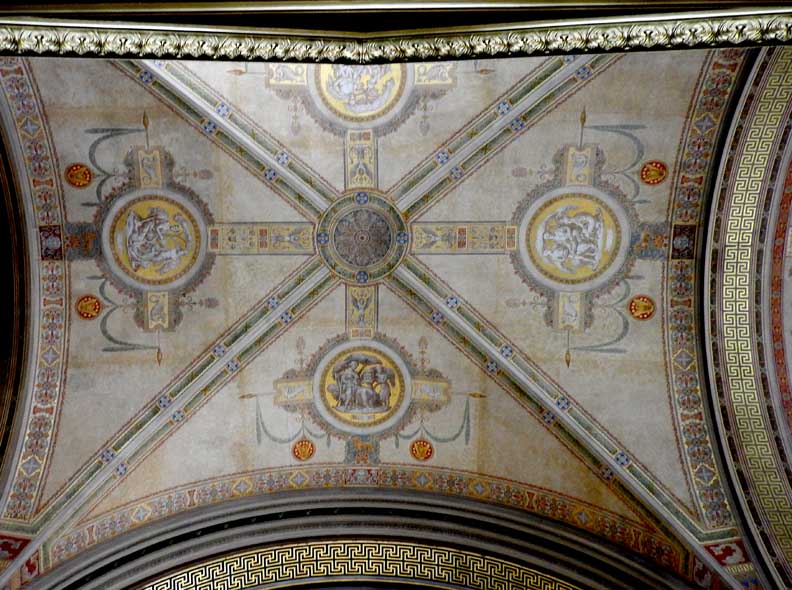  Grotesque in top center panel ... Greek fret ... Arabesques: scrolling acanthus leaves ... Center medallion detailed below: 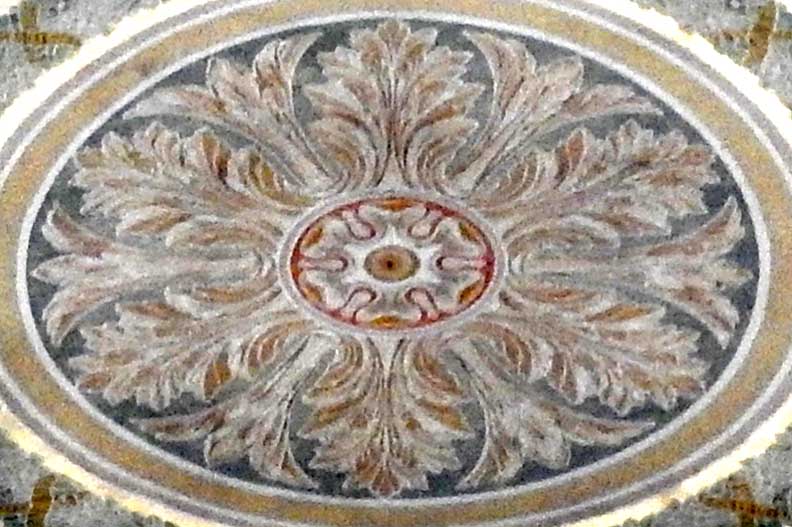 Center medallion: Rosette and surrounding acanthus leaves 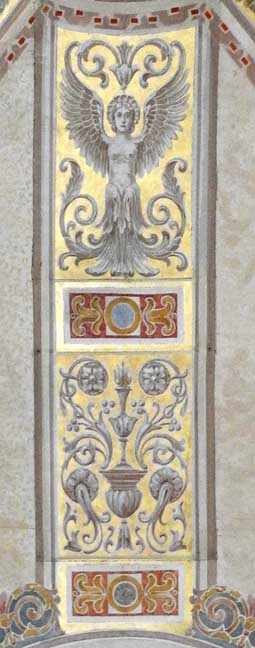 Arabesques ... Detail below: 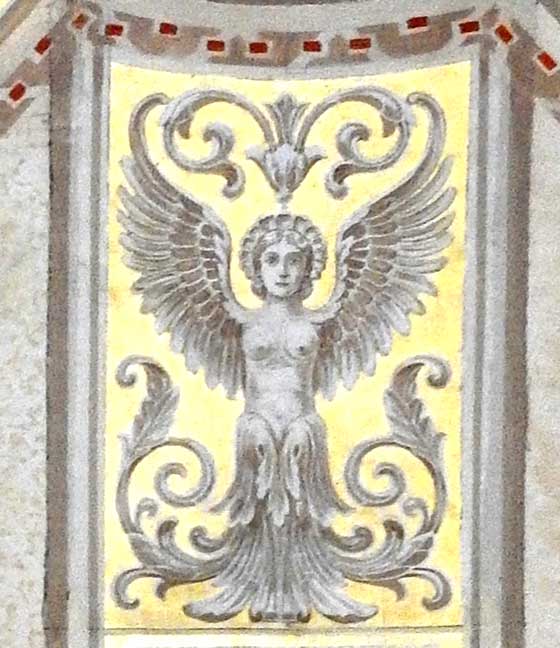 Arabesque: Female torso, wings, and scrolling acanthus leaves 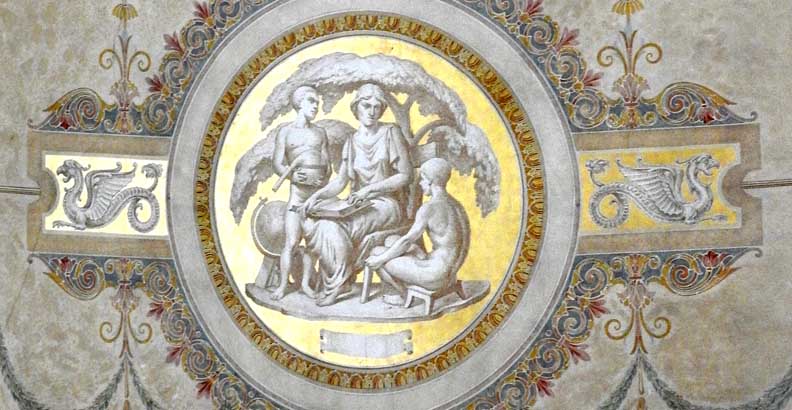 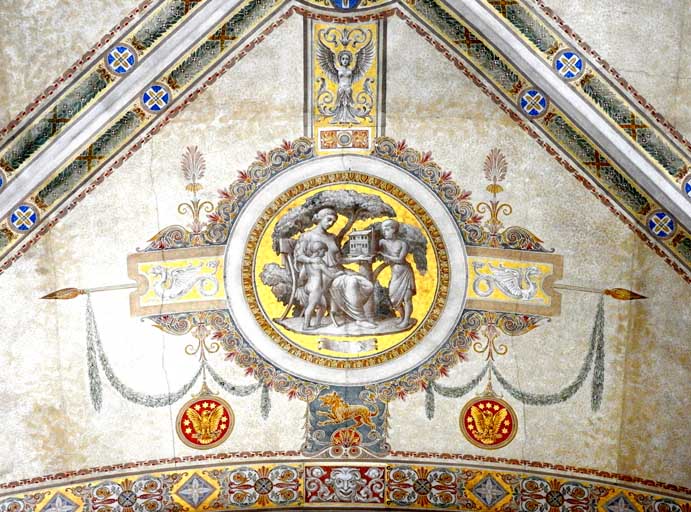 Grotesque in panel (detailed below) above center medallion depicting Mother and Children 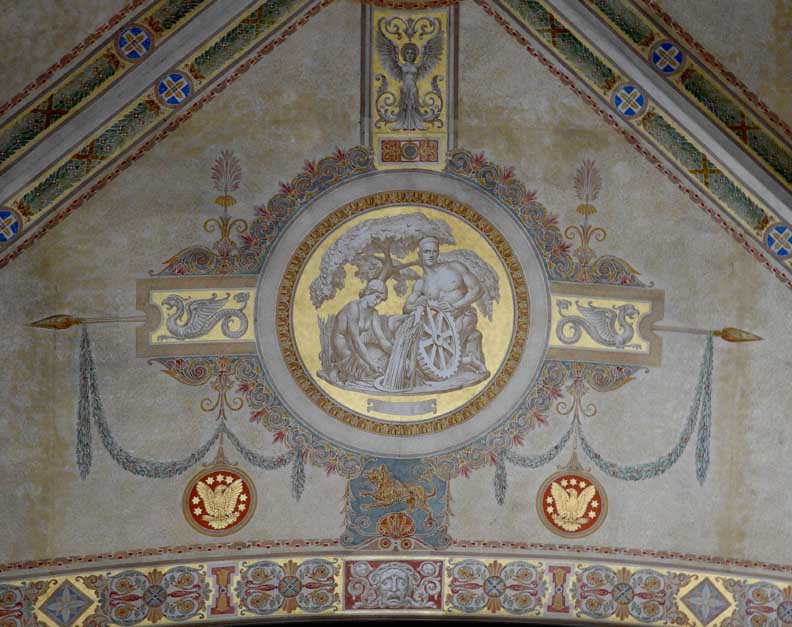 Center medallion: Couple working at water wheel ... Three details below: 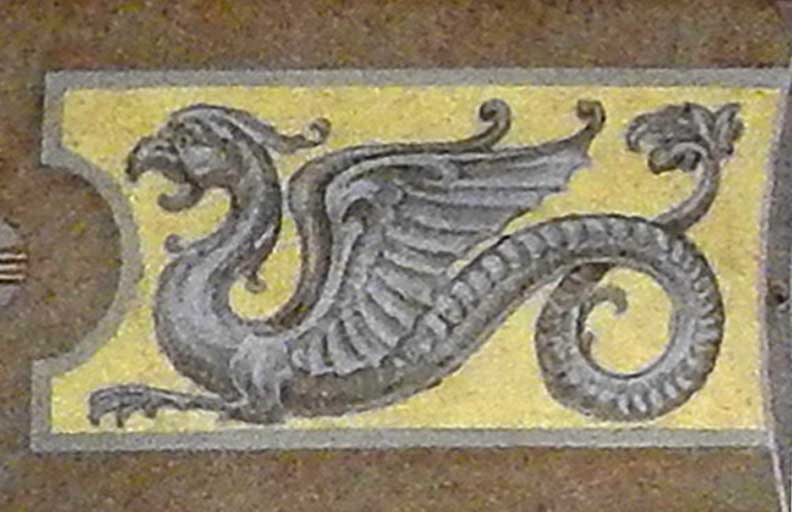 Detail #1 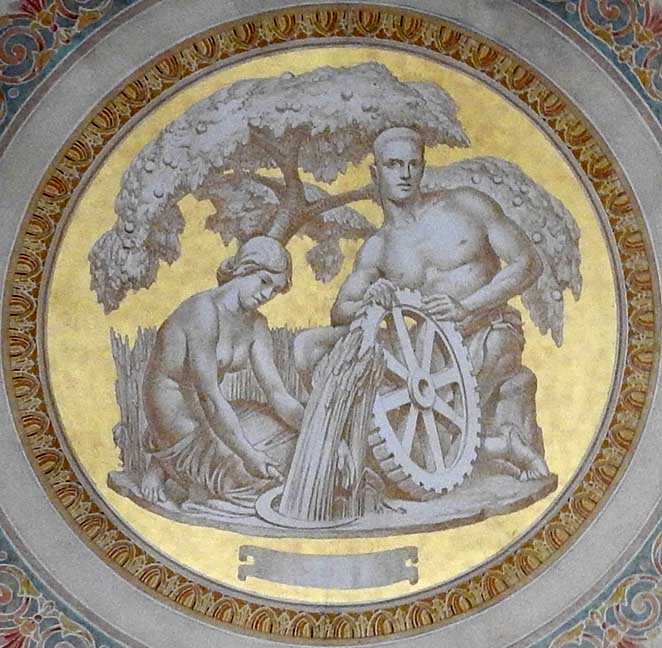 Detail #2 - Leaf-and-dart circular molding 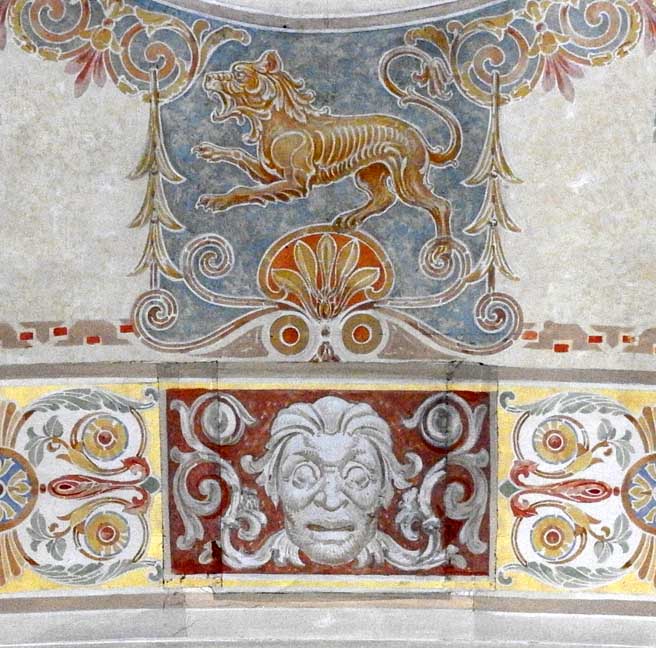 Detail #3 - Dog(?) standing on an anthemion ... Grotesque flanked by scrolling acanthus plant  Note east balcony at right ... Five east balcony details below: 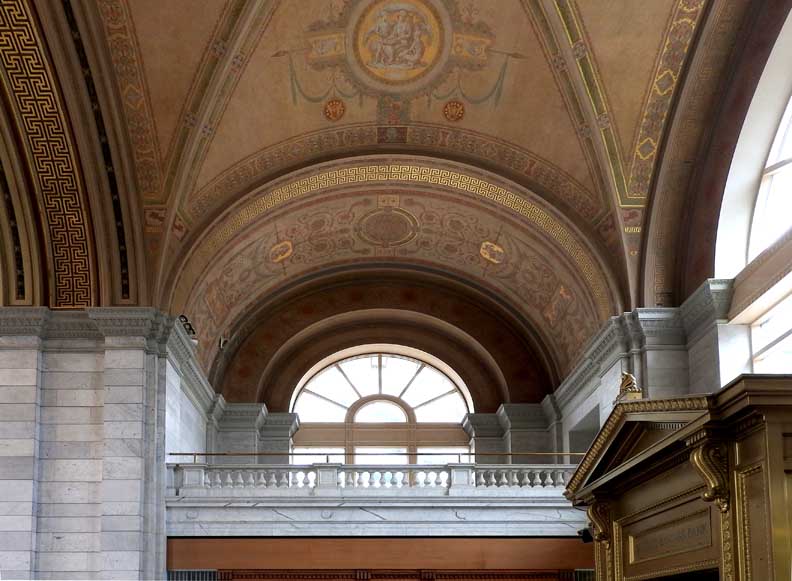 East balcony - Detail #1: Marble balustrade 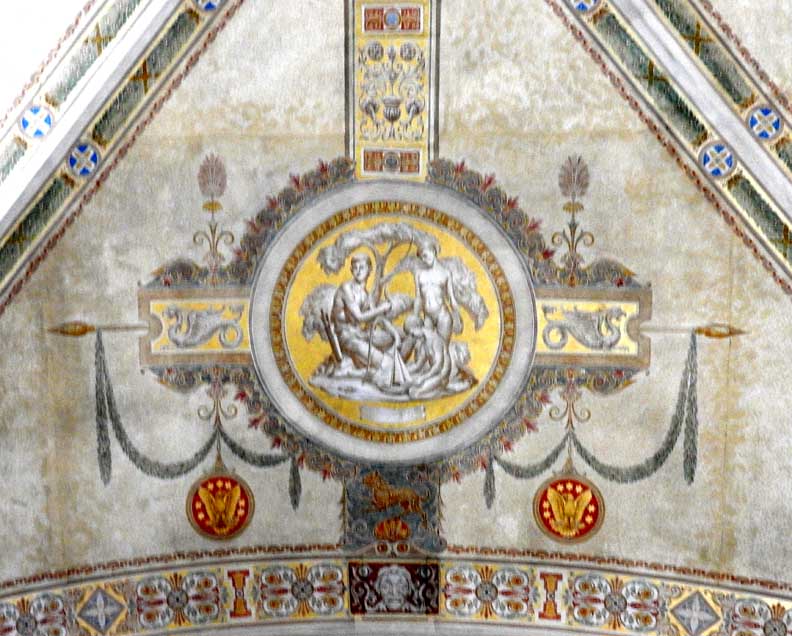 East balcony - Detail #2 ... Mother and children  East balcony - Detail #3  East balcony - Detail #4  East balcony - Detail #5: Marble balustrade 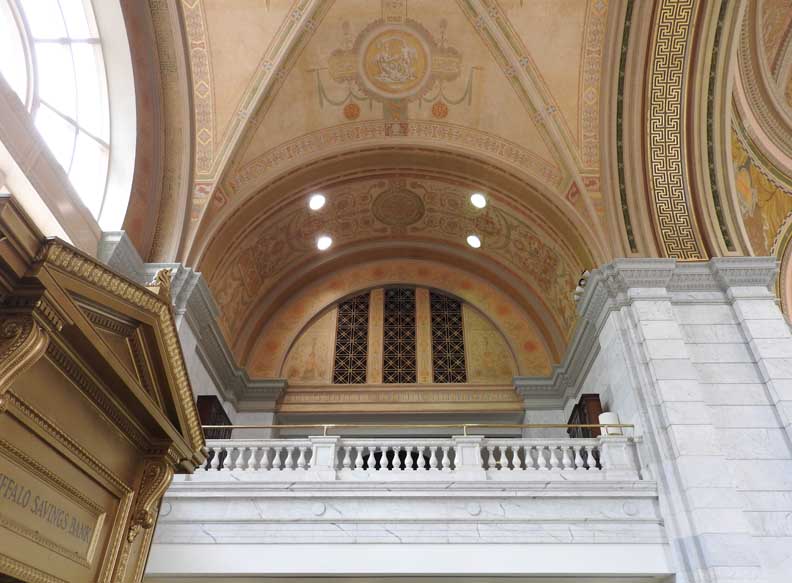 West balcony ... Detail below: 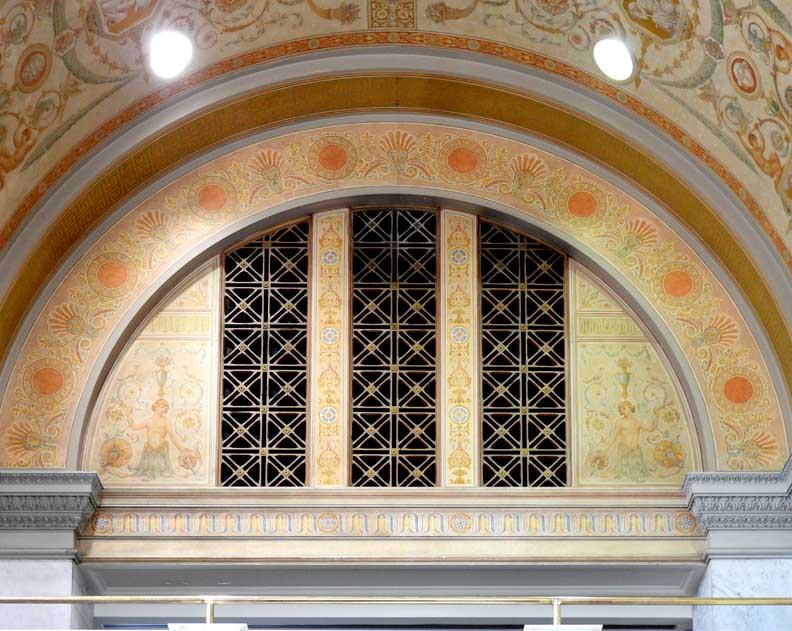 West balcony |
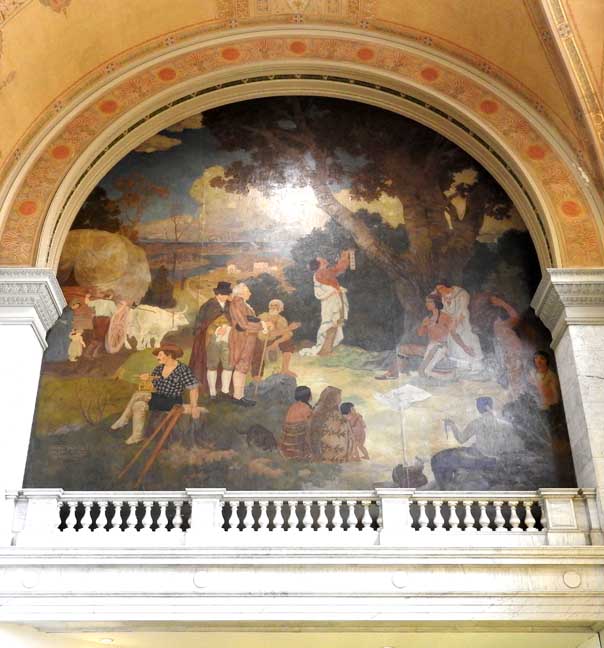
Center figure: Red Jacket "The most important figure in the little group on the terrace is the orator chief Red Jacket, who stands apart. He has spoken, and now stands in mute appeal to the Spirit of the Great Tree, which hears and knows the voices of its children. He holds up the Covenant Belt of George Washington, commemorating the peace treaty between the Iroquois and the United States." - "The Gold Dome: An Architectural Profile" brochure, pub. by Goldome, c.1954 Kneeling figure at right: Farmer's Brother "The famous Seneca war chief Honayewus, known as "Farmer's Brother," kneels beneath a great basswood tree. He is dignified, defiant, yet not quite heedless to the white man's offer: all the lumber the Indians could use for their houses, in exchange for land on both sides of the mouth of Buffalo Creek. - "The Gold Dome: An Architectural Profile" brochure, pub. by Goldome, c.1954 Old woodsman: Captain William Johnston(?) Figure with top hat: Jean Gabriel Van Staphorst, Jr.(?) "Amsterdam banker Jean Gabriel Van Staphorst, Jr., wearing a top hat define. His family had been early investors in the Holland Land Company, which owned nearly all of Western New York, and part of Pennsylvania." - "The Gold Dome: An Architectural Profile" brochure, pub. by Goldome, c.1954 Surveyor: Joseph Ellicott(?) Ellicott's portraits do not show a mustache. Perhaps this portrays one of the 130 men hired by Joseph Ellicott to survey Western Pennsylvania and Western New York. "The Treaty of Big Tree, held from August 20, 1797 until September 16, 1797 near the present-day community of Geneseo, was a landmark event in the settlement of Western New York and Black Rock. During this treaty, the Native American title to the lands west of the Genesee River were extinguished, with the exception of small areas which included the Buffalo Creek, Allegheny, Cattaraugus, and Tonawanda reservations. Assembled at this meeting was a group of reported 3,000 Native Americans including leaders such as Cornplanter, Red Jacket, Mary Jemison and others. Representing American interests was Colonel Jeremiah Wadsworth, Commissioner, assigned by President George Washington to represent the Federal government interests, Captain Charles Williamson and Thomas Morris representing his father, Robert Morris, and Massachusetts and New York representatives. Theophilus Cazenove and Paolo Busti, represented the interests of the Holland Land Company. Also in attendance was Joseph Ellicott, land surveyor, and Horatio Jones and Jasper Parrish served as the interpreters between the Americans and the Iroquois. For their rights to the lands of Western New York, the Native Americans accepted a payment of $100,000, to be deposited in the United States Bank, and paid to them in installments." - Historic Resources of the Black Rock Planning Neighborhood, November 2010 Six details below:
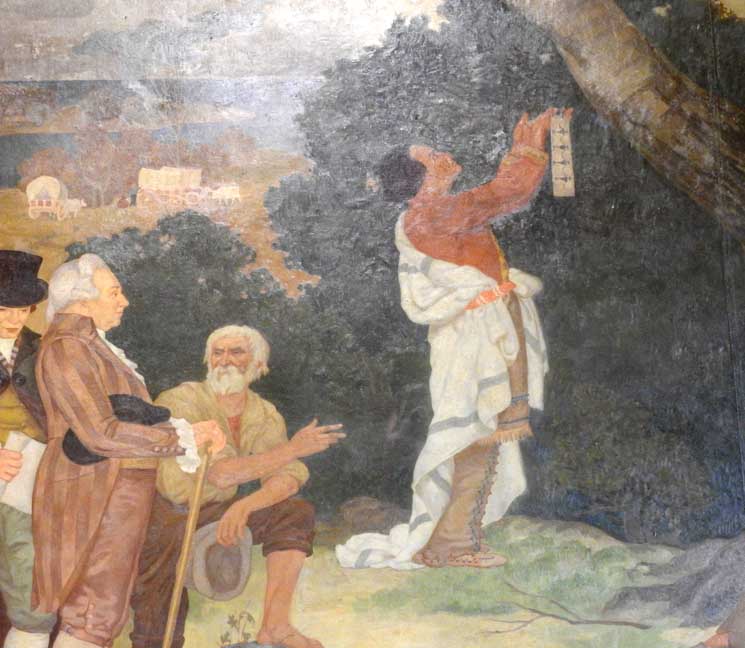 Detail #1 ... "The most important figure in the little group on the terrace is the orator chief Red Jacket,
who stands apart. He has spoken, and now stands in mute appeal to the
Spirit of the Great Tree, which hears and knows the voices of its
children. He holds up the Covenant Belt of George Washington, commemorating the peace treaty between the Iroquois and the United States." - "The Gold Dome: An Architectural Profile"
brochure, pub. by Goldome, c. 1954, c.1954
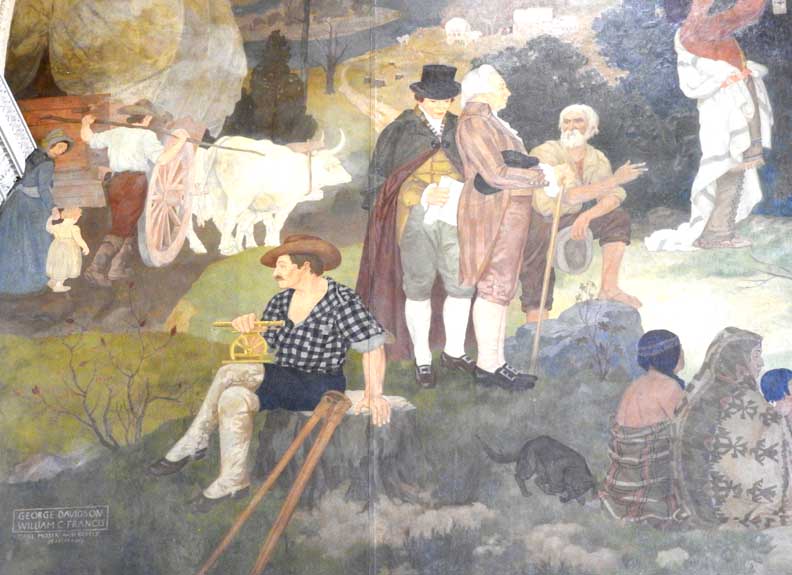 Detail #2 ... Surveyor: Joseph Ellicott? (Ellicott's portraits do not show a mustache) Note artists' signature in lower left (detailed below:)
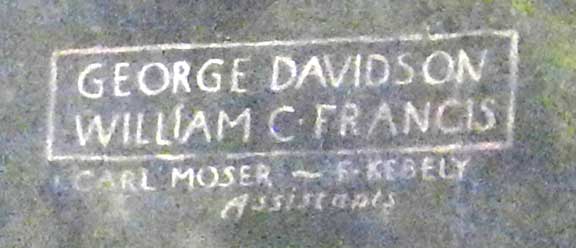 Detail #3 ... William Francis was a member of the First Presbyterian Church and was the stencils artist in the church ... These bank murals are similar to the murals at the Fidelity Trust Bank. E. B. Green, another member of First Presbyterian, was the architect for both bank buildings, and the murals in both buildings were painted about the same time. Was William Francis also the artist for Fidelity Bank? 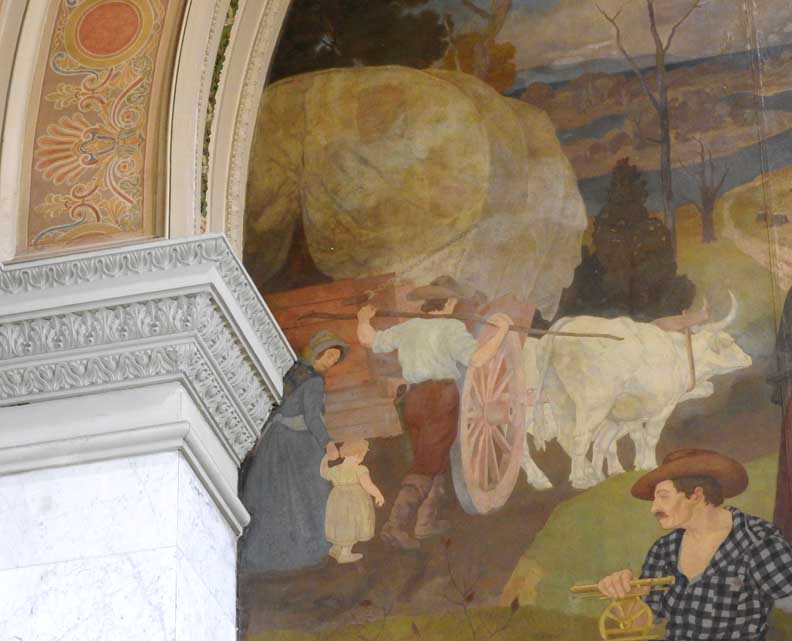 Detail #4 "In those days lumbering ox-carts were beginning to
carry new settlers toward the west. Here, the emigrants are passing
down a rough trail, preparing to camp for the night. When dawn breaks
they will again take up their slow march, wading across the bars at the
mouth of the creek, and follow the sandy shores of Lake Erie westward." "The Gold Dome: An Architectural Profile"
brochure, pub. by Goldome, c.1954
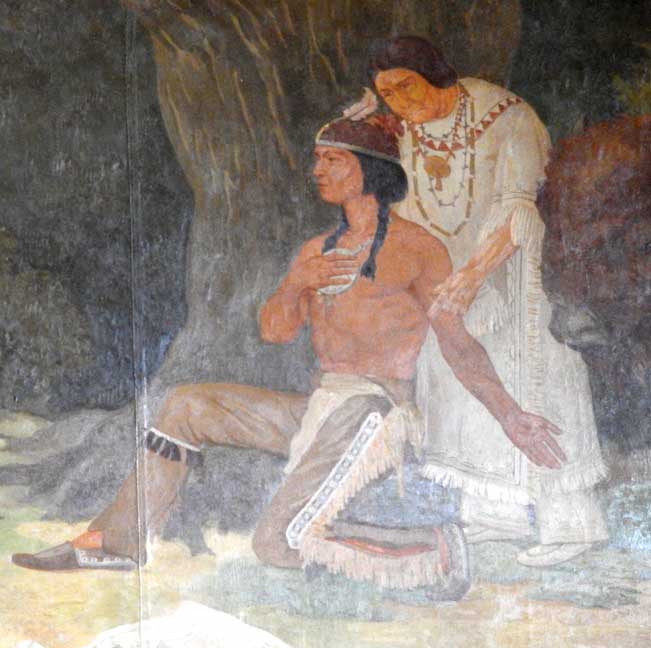 Detail #5 ... "The famous Seneca war chief Honayewus, known as "Farmer's Brother," kneels beneath a great basswood tree. He is dignified, defiant, yet not quite heedless to the white man's offer: all the lumber the Indians could use for their houses, in exchange for land on both sides of the mouth of Buffalo Creek." "The Gold Dome: An Architectural Profile" brochure, pub. by Goldome, c.1954 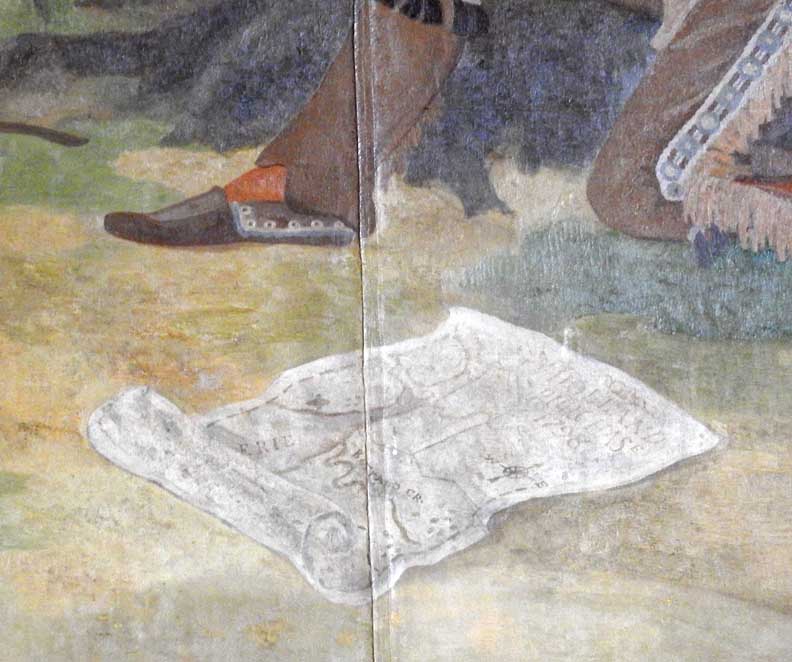 Detail #6 |
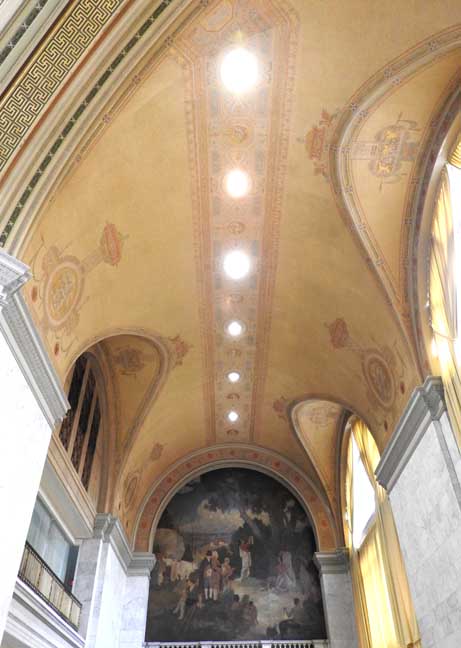 Note ceiling murals ... Details below:  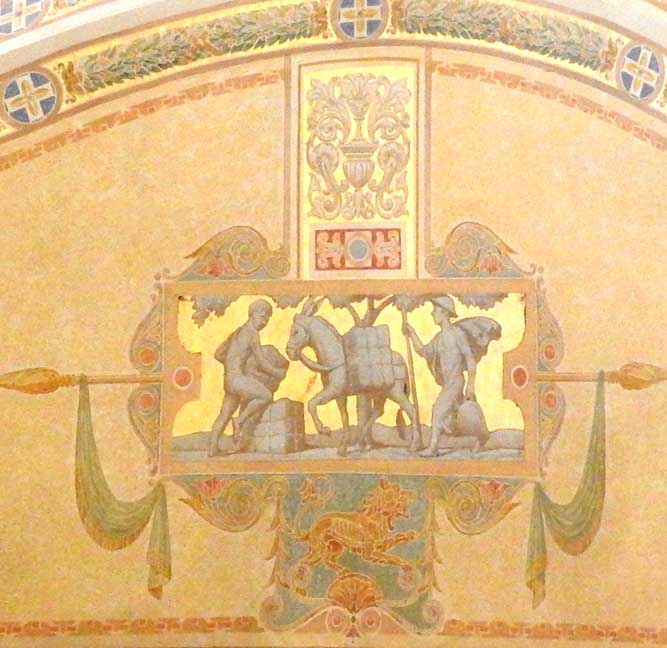 Arabesques and medallion painting 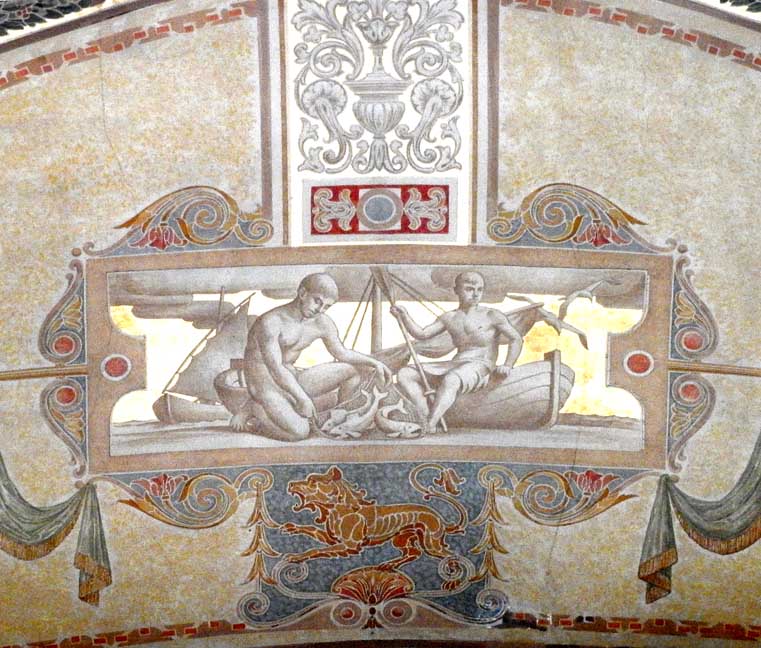 Fishermen  Two details below: 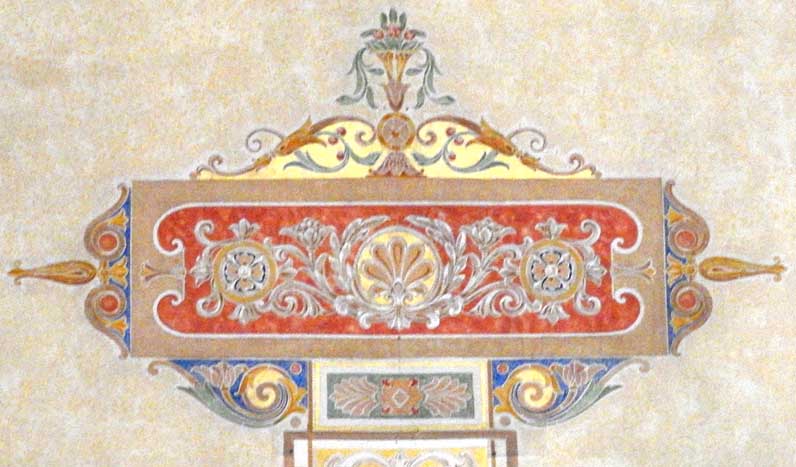 Detail #1 - Center anthemion flanked by scrolling acanthus leaves  Detail #2 - Note concrete warehouse in background  |
